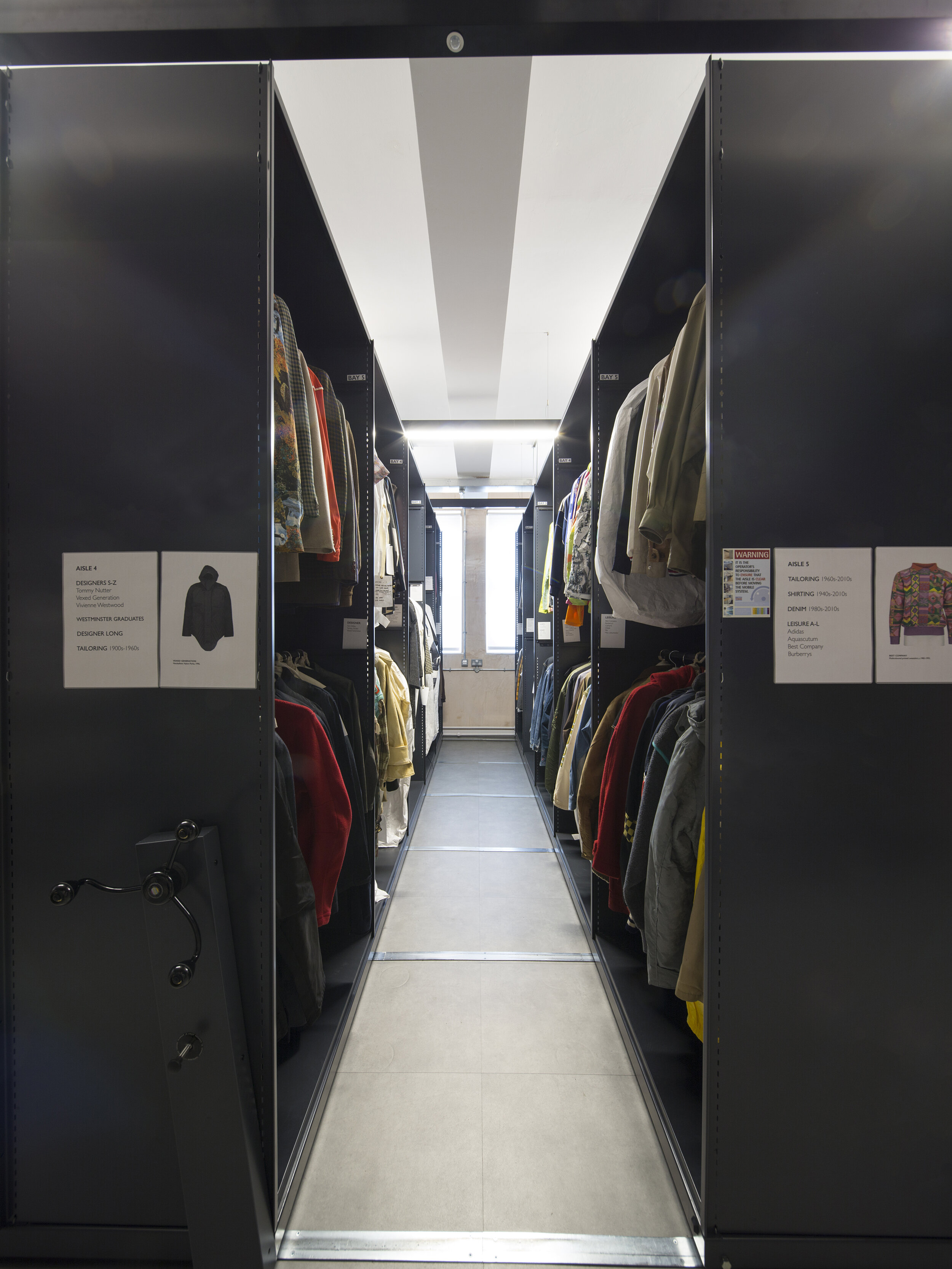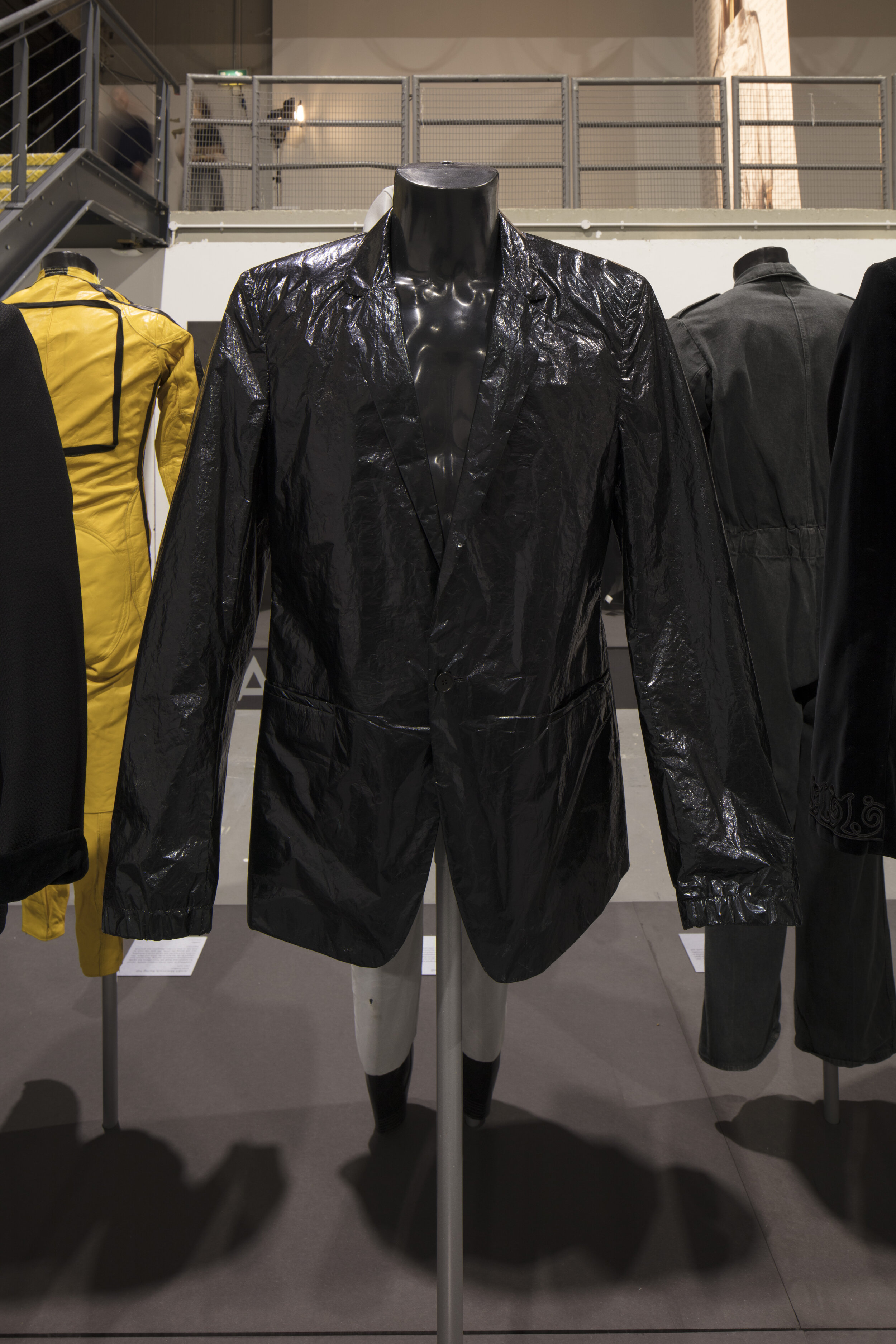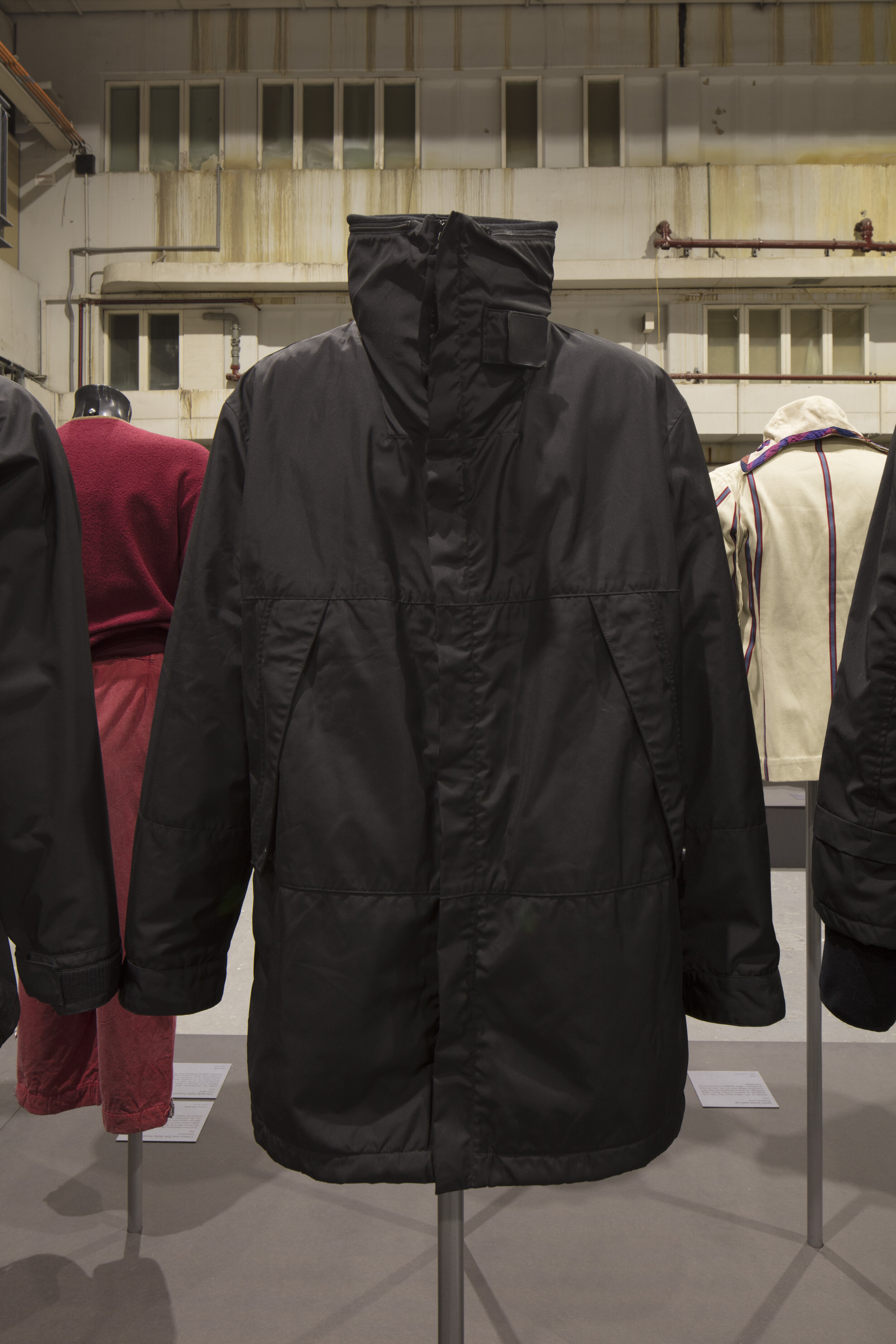Menswear Matters: Inside the Westminster Menswear Archive
The Invisible Men exhibition, staged in the Ambika P3 space at the University of Westminster.
In November, 2019, the Westminster Menswear Archive staged its first major exhibition. Invisible Men: An Anthology from the Westminster Menswear Archive displayed over 180 garments, highlighting the development and reinterpretation of archetypal menswear pieces such as overalls, the black jacket, and sportswear. The exhibition was a response to the invisibility of men’s fashion from blockbuster exhibitions and an attempt to show the significance of menswear beyond the flamboyant styles of the “dandy” or “peacock.” While the exhibition draws attention to the design of utilitarian garments and the untapped potential of menswear exhibitions, it includes only a small sampling of what the Westminster Menswear Archive has to offer.
Founded in 2016, the Westminster Menswear Archive now has over 1,700 objects in its collection. The collection is predominantly made up of mass-produced garments from the past 120 years, with a focus on British designers, British manufacturers, and garments that have been influential to British culture. It holds a range of utilitarian garments, uniforms, and pieces from designers such as Alexander McQueen, Jean-Paul Gaultier, and Massimo Osti. The archive is the brainchild of Professor Andrew Groves, Course Director for the BA in Fashion Design at the University of Westminster in London. The collection was built on Groves’ realization that garments were useful for teaching fashion design, particularly for enabling students to understand “the language of design” and for solving problems through garments.
Dr. Danielle Sprecher hosts student studying garments from the collection.
As primarily a teaching collection, the archive offers a unique opportunity for students to engage with the study of historic menswear. The archive’s curator, Dr. Danielle Sprecher, hosts drop-in days for students and describes the archive as “a reference library of garments.” She revealed, “People can come and browse the collection, they don’t have to ask permission to see certain things, they can touch the garments, and put them on mannequins. But they can’t try them on!” However, it is not only students who benefit from the archive, as garments are also allowed to go out on hire. Fashion designers and industry professionals can borrow objects from the archive and bring them to their studios for design inspiration.
“The open-access nature of the archive contrasts greatly from museum collections and corporate archives, which offer limited access and little-to-no object handling. ”
The open-access nature of the archive contrasts greatly from museum collections and corporate archives, which offer limited access and little-to-no object handling. While the archive’s policy gives students and industry a greater ability to examine the design of historic garments, it has informed some of the acquisition decisions for the collection. “We have deliberately not purchased objects that have a really high economic value. The average price we paid for a garment was around £150. Some were only £5 pounds, and the most expensive were £3000,” Sprecher explained.
View inside the Westminster Menswear Archive.
The driving force behind all of the acquisitions for the collection is that the objects must be menswear pieces. For Groves and Sprecher, an archive solely dedicated to menswear responded to the growing importance of men’s fashion within the industry and its lower status in historic collections and museum exhibitions. “Menswear was very noticeably absent in Alexander McQueen: Savage Beauty, considering that McQueen started his career on Savile Row and that he included menswear from the very beginning. This was particularly striking for Andrew [Groves], who had worked with Lee McQueen,” recalled Sprecher. “Menswear has also been doing really well economically. There is more demand for menswear designers. As a fashion design department, this was an important consideration. Focusing on menswear made us unique. It has been useful in terms of recruitment, for it has enabled us to establish ourselves as having an expertise.”
By focusing on a menswear niche, the archive and its exhibitions aim to raise the status of menswear. Sprecher, who has worked with a wide range of dress and textile collections in the United Kingdom, is acutely aware of the preconceptions and prejudices surrounding menswear. “Menswear is considered boring, and thought to not be appealing to audiences,” she said. However, Invisible Men proved that menswear can be visually exciting and often consists of incredibly innovative design details. For instance, Calvin Klein’s Mylar Blazer is made from “an industrial polyester resin which is used to stabilize body temperature,” and C.P. Company’s Atlas Jacket features an inflatable PVC pillow.
Although the Westminster Menswear Archive has been specifically designed to support fashion design and fashion design students, it has the potential to be used in many different ways in the future. According to Sprecher, the exhibition generated a highly positive response from the public: “Over 5,700 people visited the exhibition in four weeks, all of the events sold out, and student groups from around the country came to see it.” With the success of the exhibition in London comes the possibility of a travelling exhibition and the likelihood of future exhibitions of menswear curated by Groves and Sprecher. Further digitization, research, and publications are in the works, but for now Sprecher is consolidating the outcome of their most recent exhibition: “We achieved what we really wanted to achieve: to show that there is an audience and an appetite for these kinds of exhibitions, and that menswear is interesting, diverse, and relevant.”







